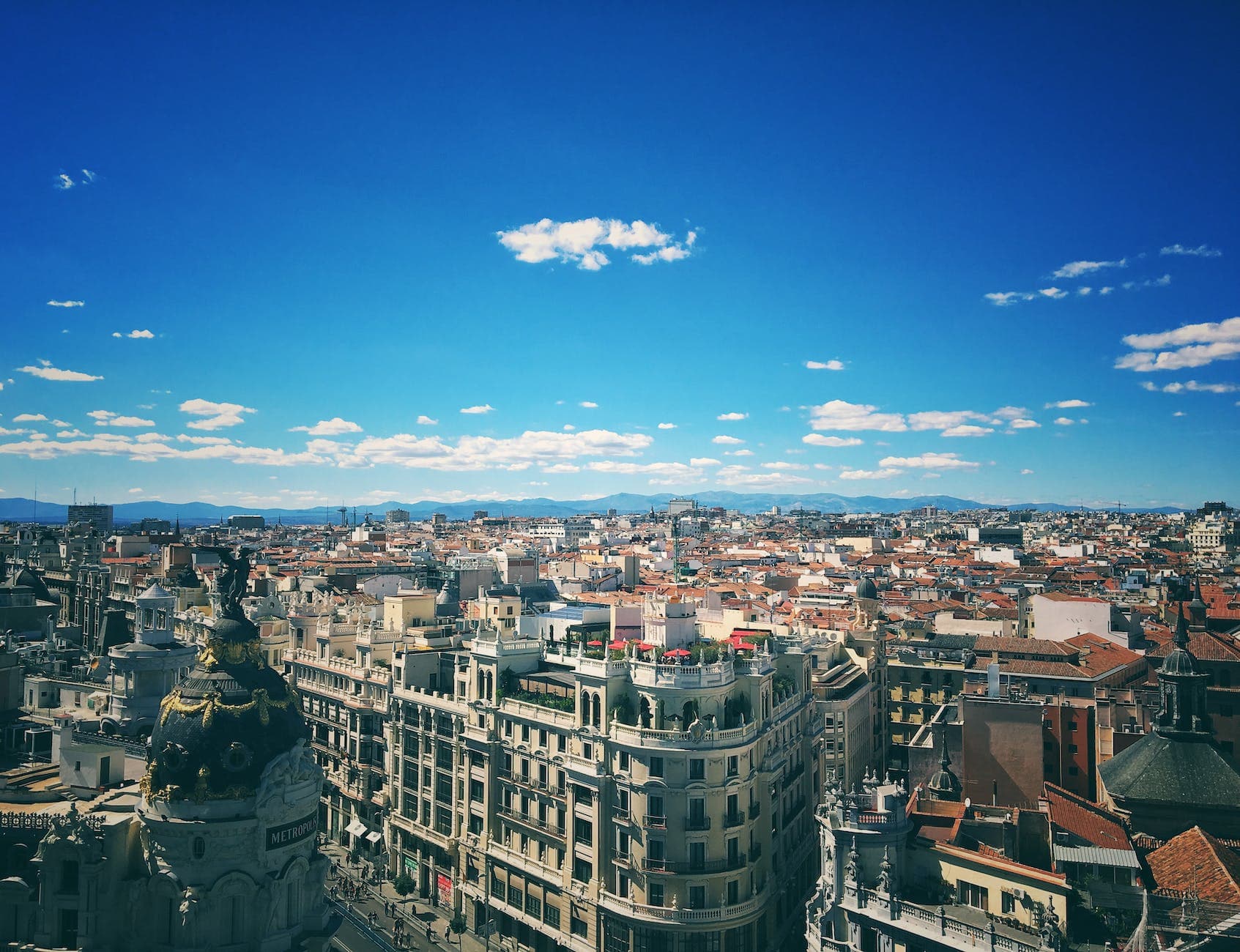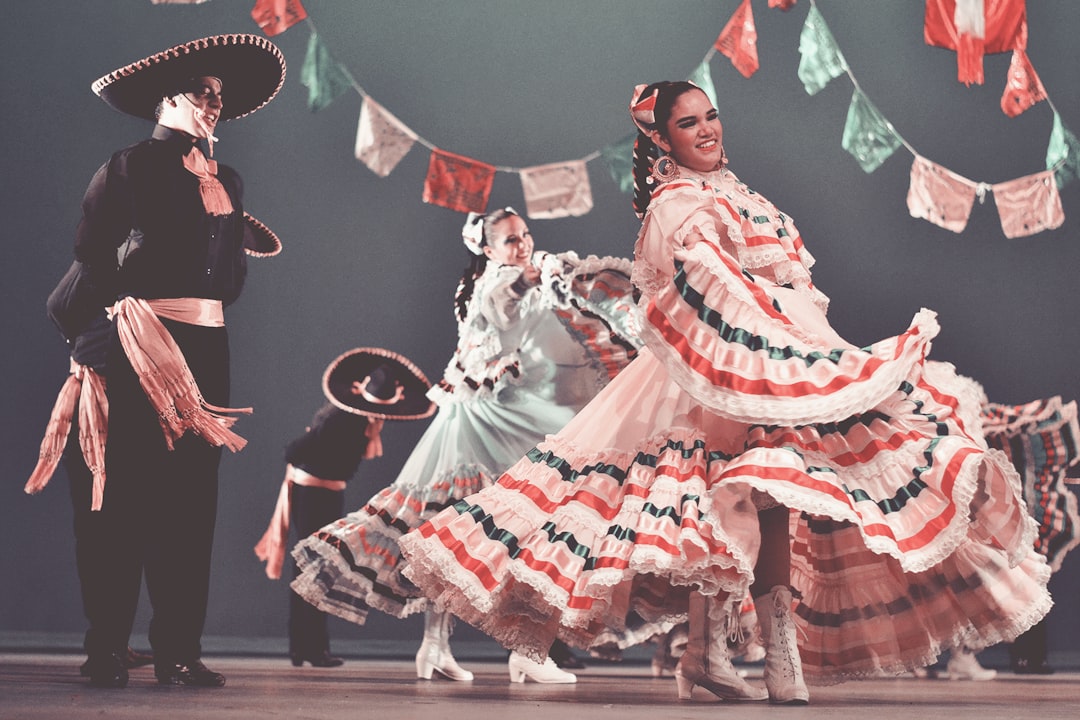
Table of Contents
3 Sentence Introduction
Madrid is the capital city of Spain. The city can be geographically found in the center of Spain. It is also considered to be the nation’s chief transportation and administrative center. Madrid is considered to be a modern city with old and picturisque streets. It a very beautiful city to visit and explore.
Area & Population
The current population of Madrid is 6,751,000 (2023)
Avg Weather & Days of Rain

In Madrid, the annual average temperature is 14.5 °C or 58.0 °F.
It gets cold during the winter months, October to Febuary. It mostly rains during the month of April and it gets really hot during the summer months, end of June till September.
Best Season to Travel
The best time to visit Madrid is during the Summer times. Between the months of June till end of August.
Canadian Embassy in Madrid
If you ever in need of help, Canada has a embassy in madrid at: Calle Núñez de Balboa 35, 7th floor 28001 Madrid, Spain The Embassy can be contacted by phone at +34 91 423 3250, or by email at mdrid-cs@international.gc.ca.
Climate
During the summer time, the temperature can be as low as 22.8 °C (73) °F and as high as 26 °C (78.8) °F. July and August are the most hottest and June and September are the coolest. During the winter times, the lowest temperuatre is usually in Janurary which is averaged to be 4.8 °C (40.6) °F and the highest is during Novemeber which is 8.6 °C (47.6) °F.
As for the spring time, the months of March and April, the average lowest temperature is in March which is 9.2 °C (48.6) °F and in a April it is 12.2 °C (53.9) °F. In April, it has the highest number of rainy days, which is 6 days out of the whole month. Lastly, during the fall time, which is usually the month of October, the temperature averages of 15.1 °C (59.1) °F.
Culture and Traditions in Madrid
Madrid culture is related directly to the history of the city itself. The culture has a mix of Spanish and European traditions. These traditions are as follows:
Bullfighting
When the weather starts to get warm, during the month of May, the people of Madrid and the tourist visit the Plaza de las Ventas as the place starts to prepare for the yearly bullfighting events. It was in 1931 when Las Ventas Bullring houses Madrid’s Bullfighting Museum started to host the first every Bullfighting event in Madrid. About 23,798 spectators attend this event and many like to try the tradionatal bullfighting dish called the Rabo de toro (oxtail). This dish can be ordered at the restaurants or the bars that are within the vacinity of Plaza de las Ventas.
Flamenco
One of the oldest and richest traditions of Madrid is the Flamenco dance. Throughout the week, you can find many people dancing the traditional dance either in the city’s theatre or at the tabloas,Flamenco venues, or in the halls. Many people, couples especially, love to particiapate in this tradition that is called Flamenco.
El Rastro Flea Market
Another amazing tradition that the locals love to participate in is visiting the El Restro Flea Market on Sundays mornings. Many people visit this flea market to do some shopping since it has almost everything. If you want to buy antiques this is the place to be. If you want to by second-hand goods this is also the place to be. If you need anything, make sure to visit the El Rastro Flea Market, you would not regret it.
Packing List for Each Season
Spring (March to May)
- Lightweight clothing: t-shirts, shorts, dresses, and light pants.
- A light jacket or sweater for cooler nights.
- Comfortable walking shoes for exploring the city.
- Sunglasses and a hat to protect from the sun.
- A rain jacket or umbrella in case of occasional showers.
Summer (June to August)
- Lightweight and breathable clothing: t-shirts, shorts, skirts, and dresses.
- Sunscreen with a high SPF to protect from the strong sun.
- Sunglasses, a hat, and a fan to keep cool.
- Comfortable sandals or sneakers for walking around the city.
- A swimsuit for trips to nearby beaches or pools.
Fall (September to November)
- Light to medium-weight clothing: long-sleeve shirts, pants, and light jackets.
- A scarf and hat for cooler evenings.
- Comfortable walking shoes for exploring the city.
- An umbrella or rain jacket as it can rain more often in the fall.
Winter (December to February)
- Warm clothing: sweaters, jackets, coats, and wool pants.
- A scarf, hat, and gloves to keep warm.
- Waterproof and insulated boots for walking on snowy or icy streets.
- An umbrella or rain jacket in case of occasional rain.
Top 5 Famous People You’ll be Surprised are from Madrid
Did you know that many famous people were born in Madrid.
Enrique Iglesias
Enrique Iglesias, the famous spanish singer and songwriter was born in Madrid on May 8th, 1975.
David de Gea and Alvaro Morata
If you know football than you might know David de Gea and Alvaro Morata. David was born in Madrid on November 7, 1990 and Alvaro was born October 23, 1992.
Marian Rivera
If you watch Filipino soaps than you might know Marian Rivera, did you know that she was actually born in Madrid on August 12, 1984. Shocking right!
Alba Flores
Also, do you remember Nairobi in the Netflix series Money Heist or Saray Vergas in the series Locked-Up (Vis a Vis), than you might know Alba Flores. Alba was born in Madrid on October 27, 1986.
Top 5 Interesting Facts About Madrid
Did you know that Madrid is thought to be over 2000 years old.
There are traces of people living along the Manzanares River that dates back to the Visigothic, Roman, and even prehistoric times.
Have you every wondered where Madrid as a name comes from?
There are many myths as to the origin of name, some scholars believe the name came during the Roman Settlement, from the word “Matrice”.
There is also records that the city was called ‘Magerit’ which means ‘place of water’ in Arabic and it is beleived that this is where Madrid came from.
Geographically, Madrid has the highest altidue of all the cities in Europe.
Madrid is situated 646 metres above sea level. Making it the highest capitals in Europe.
The Offical symbole of Madrid is a bear rearing up on its hind legs and feasting on berries from the madroño tree.
This symbol has been linked to Madrid since the medieval period.
The statue of the symbol can be found at Puerta del Sol, 28013 Madrid, Spain.
Did you know that Madrid is the most sunniest city in all of Europe.
Madrid averages over 300 days of sunshine per year. If you are looking to increase you Vitamin D exposure what better way to do that than to visit Madrid.
Top Beaches
Madrid does not have any near by beaches. However, if you have time to spare and are willing to travel a couple hours outside of the city than these following beaches are some of the best to visit while in Spain.
Playa de Langre
Playa de Langre is found in the countryside of Costa Trasmiera. It is the beach to be at if you love to surf. The beach is well known for having some of the best waves.
The beach is found in a secluded and in calm area with low cell service you can relax and enjoy the view without getting distracted by any social media.
Santander Bay Beach

If you love crowds than Santander Bay Beach is were you want to be. There are many great local street foods you can explore and try. If you love beach sports that you can try to play volleyball with the locals. You can also swim, sunabath and even chill with your friends. The beach can be found in Cantabria.
Playa de Bolonia
Unlike the first two where you can use local transportation, Playa de Bolania requires a ferry or a private jet to reach this beach. Meaning that this beach is a very secluded and if you want to get away from the city crowds and madness than this beach is the place to be. This beach has some amazing famous Roman ruins that you can explore such as the Baelo Claudia.
Top Tours in Madrid
Prado Museum tour

If you love art than the Prado Museum tour is something you must do while visiting Madrid, Spain. The Prado Museum is house to an extensive collection of European art from the 12th to the 20th century. The museum’s collection includes works by Spanish artists such as Velázquez, Goya, and El Greco, as well as masterpieces by Italian, Flemish, Dutch, and German artists.
During the tour, the visitors are led through the museum’s galleries by a knowledgeable guide. The guide provides insights into the artwork and artists on display, as well as the history and architecture of the museum itself. The tour can last between one to two hours, depending on the specific itinerary and interests of the group.
Royal Palace Tour
If you are interested in how the Spanish Royal Family used to live than going on the Royal Palace tour could be something of interest to you. The tour guide showscases the palace’s ornate rooms and halls, which are filled with art, antiques, and other treasures. The tour typically includes highlights such as the Throne Room, the Royal Chapel, and the State Dining Room, as well as the palace’s impressive art collection, which includes works by Spanish and European artists. The Royal Palace Tour provides visitors with an opportunity to learn about the history of the Spanish monarchy, as well as the art and architecture of the palace itself. The duration of the tour may vary depending on the specific itinerary and interests of the group, but typically lasts between one and two hours.
Tapas and Wine Tour
If you love food and if you love Wine that the Tapas and Wine Tour is something you must go on while visiting Madrid. The Tapas and Wine Tour in Madrid is a guided food and drink tour that takes visitors to some of the city’s best tapas bars and wine shops. During the tour, the tour guide will give the visitors the opportunity to taste a variety of traditional Spanish tapas, such as croquetas, tortilla española, and patatas bravas, as well as sample different types of Spanish wine. The tour is a great way to learn about the history and culture of Spanish cuisine, as well as to experience the lively atmosphere of Madrid’s tapas bars. The tour typically lasts between two and three hours. So if you love food than this tour is for you.
Madrid Literacy Quarter Tour
The Madrid Literary Quarter Tour takes the visitors through the literary and artistic heart of Madrid. The tour explores the neighborhood of Las Letras, which was once home to some of Spain’s most celebrated writers, including Miguel de Cervantes, Lope de Vega, and Calderón de la Barca. The visitors are lead through the narrow streets and charming squares of Las Letras where they learn about the lives and works of the great Spanish writers who once called the neighborhood home, as well as the political and cultural history of the area. The tour typically includes visits to key landmarks such as the Cervantes House Museum, the Lope de Vega House Museum, and the Ateneo de Madrid. The tour last between two to three hours.
Flamenco Show Tour
If you love music and you love to dance than the Flamenco Show Tour is something you should do while visiting Madrid. The Flamenco Show Tour in Madrid is a cultural experience that allows visitors to discover the passion and artistry of Flamenco, a traditional form of music and dance that is closely associated with Spain. The tour involves the visitors visiting local Flamenco venue, where they can enjoy a live performance by professional Flamenco dancers, singers, and musicians. The show typically includes several different dances and songs, each showcasing the dynamic and passionate nature of Flamenco. The tour is typically between two to three hours and some tours may also include additional activities, such as a pre-show dinner or a guided walking tour of Madrid’s Flamenco neighborhoods.
Top Parks & Gardens
Retiro Park
Retiro Park, also known as Parque del Retiro, is a large park in central Madrid, Spain. It covers 125 hectares and is a popular destination for both locals and tourists. The park was originally a royal garden and was opened to the public in the late 19th century. Retiro Park features several gardens, lakes, and monuments, including the Crystal Palace, a glass and metal structure built in the late 19th century for the Exposition of the Philippines. There is also a large artificial lake where visitors can rent rowboats and paddleboats. The park is known for its beautiful gardens and trees, and is home to over 15,000 trees of various species. It also features several sculptures and fountains, including the famous Fountain of the Fallen Angel, which is the only statue in the world dedicated to the devil. Retiro Park is a popular destination for outdoor activities such as jogging, cycling, and picnicking. It also hosts a variety of cultural events throughout the year, including concerts, art exhibitions, and outdoor film screenings.
Royal Botanical Gardens

The Royal Botanical Garden of Madrid, also known as the Real Jardín Botánico de Madrid, is a historic botanical garden located in Madrid, Spain. It was founded in 1755 by King Ferdinand VI and it is one of the oldest botanical gardens in the world. The garden has over 5000 species of plants, including many rare and exotic plants, and it is divided into different sections, such as the historical garden, the terraces garden, the systematic garden, and the greenhouses. It is a popular attraction for tourists and locals alike, offering a peaceful retreat from the bustling city.
Casa de Campo
Casa de Campo is a large public park in Madrid, Spain. It covers an area of over 1,700 hectares (4,200 acres) and is the largest park in Madrid. The park is located west of central Madrid and is easily accessible by public transport. It is home to a number of attractions, including a lake, a theme park, a zoo, an amusement park, and various sports facilities. Casa de Campo is also popular for hiking and cycling, and it offers great views of the city from its hills. It is a popular destination for both tourists and locals alike.
Transportation options in the city
Metro and Bus System
Madrid has a metro and bus system that you can use while visiting the city. The city has around 2,000 buses for over 200 different lines. The buses connect the cities main interest points and it is relaitvely cheap. As for the metro, it has 13 lines and 301 stations that connect the peripheral parts of the city.
Taxis
If you do not like public transporation or you are travelling at night, or if you are in a hurry or if you are carrying too many bags there are an abundance of taxis that can be found. The front doors of taxis are both red with a diagonal band, and the roof sign is also red. If a taxi is available, its roof sign’s green light will be lighted, and you can hail one by raising your hand.
Vaccine Requirements
As of April 2023, the Spanish government requires that all visitors of the country must provide a proof of vaccination that is approved by the European Medicines Agency (EMA) or the World Health Organization (WHO). Or a travelers can provide a negative COVID-19 test result taken within 72 hours prior to arrival.
Additionally, some regions in Spain may have their own specific requirements or restrictions in place. It is recommended that travelers check with local authorities and their airline or transportation provider for the most up-to-date information and requirements.


















